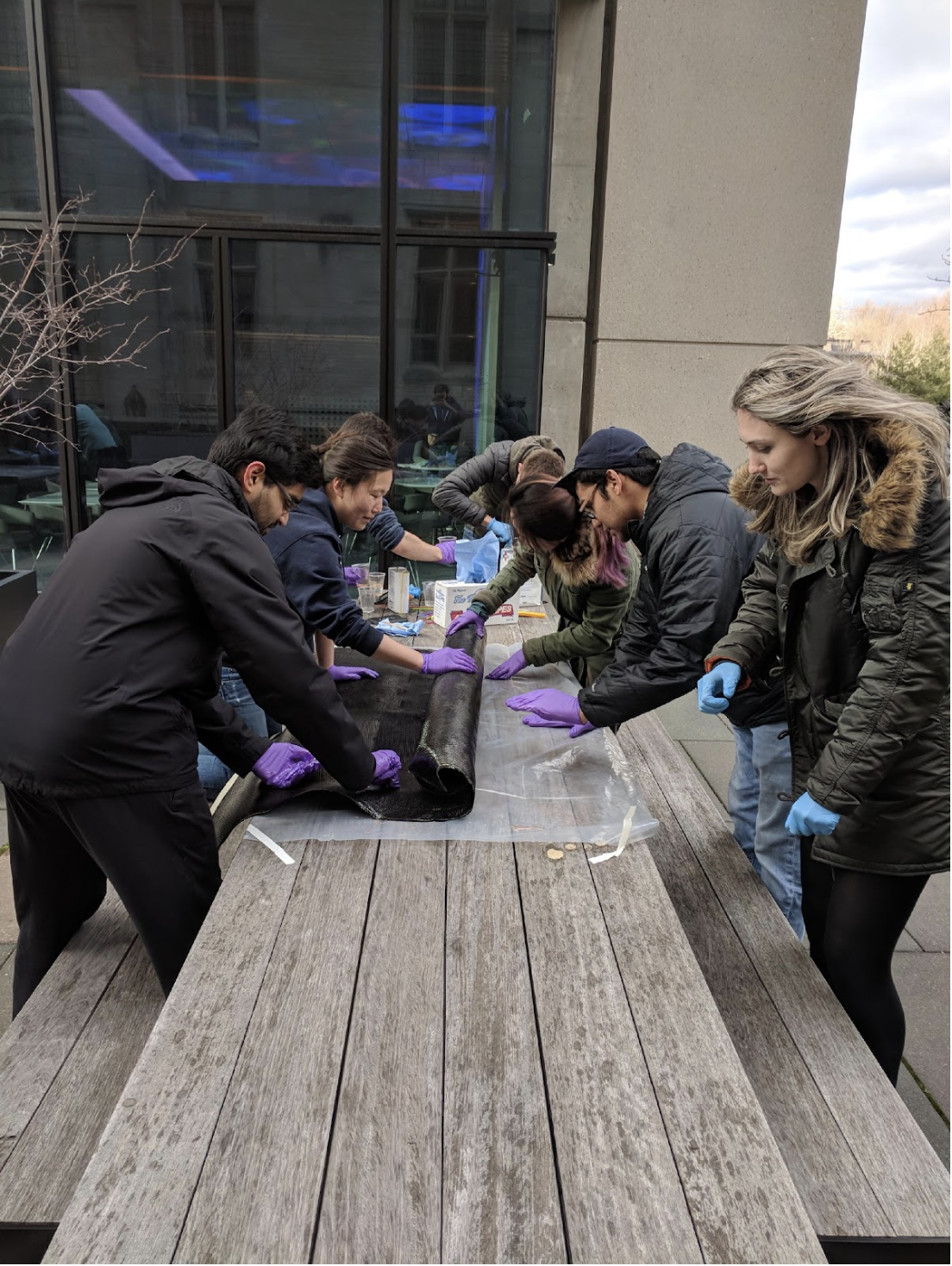Three Stage Rocket
The Advanced Rocket Project developed a three-stage rocket from the ground up. This rocket was fully student-designed and constructed, and will serve as a foundation for future YUAA multistage rocket development.
Overview
Unlike other rocket projects attempted by YUAA, one of the Three Stage Rocket project leaders already had NAR certification. So, it was not necessary to spend time building a certification rocket at the beginning of the year. Furthermore, the experienced nature of the team meant minimal time had to be spent going over rocketry and fabrication basics. Due to this, we were able to spend the first few months on the design of the final rocket itself. We spent time discussing the best ways to design the parachute components of the rocket in order to minimize the length of the rocket, which was initially planned to be over 20 feet tall. Strategic design and the removal of the drogue from the first stage of the rocket (due to its low simulated apogee) brought the final length of the rocket to roughly 17ft. The rocket was fully modeled in OpenRocket.
Carbon Fiber Layups
Most of the later meetings for this project were spent on carbon fiber layups of the rocket body tubes due to the difficult and time-consuming nature of the task and the size of the rocket. A normal carbon fiber layup is already complex, but we had an added challenge in that the material we were adhering the carbon fiber to, a rigid plastic called “Blue Tube 2.0,” was not optimal for layups. Thus, extra care had to be taken to ensure proper surface adhesion, adding to the time of each layup and limiting us to a single layup per meeting. As the rocket was composed of five body tubes, five entire meetings were spent on just layups.
Body Tube Fabrication
Because the dust from both epoxy and carbon fiber is hazardous, we were unable to do any of the cutting within the CEID or any other Yale shop. Thus, we used a Dremel tool outside (while wearing dust masks) in order to cut the body tubes to the right size. We used this same method to cut out fin slots.
Internal Electronics
One of the biggest dangers of a three-stage rocket is that a motor in an upper stage will fire when the rocket is not pointing up, possibly endangering people on the ground. In order to mitigate this risk, we designed a system to prevent motor ignition if the rocket was not in the correct orientation. It used gyroscopes to tell an Arduino microcontroller whether to initiate the launch systems in the upper two stages of the rocket. When we began building this system, we were informed that the launch event that we planned to attend would require us to purchase and use a commercial staging system in our rocket.
Our recovery systems in each stage were controlled by a Stratologger CF, a barometer-based commercial altimeter designed for rocket launches.
Internal Rocket Structure
In order to increase the structural integrity of the rocket, we built bulkheads and centering rings from 0.5-inch-thick birch plywood which were much stronger than required. The first and second stages had 75-millimeter motor mount tubes, and the third stage had a 54-millimeter motor mount tube.
Conclusions
We were very proud of what the Advanced Rocket team accomplished this year, despite the disappointment of being unable to launch a rocket. We developed numerous tools and techniques to aid Rocket teams of future YUAA projects.
